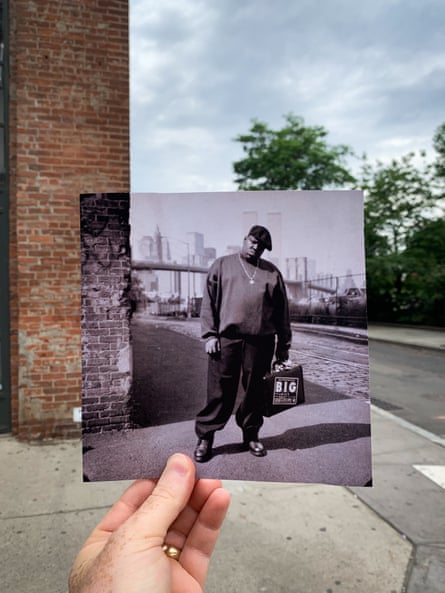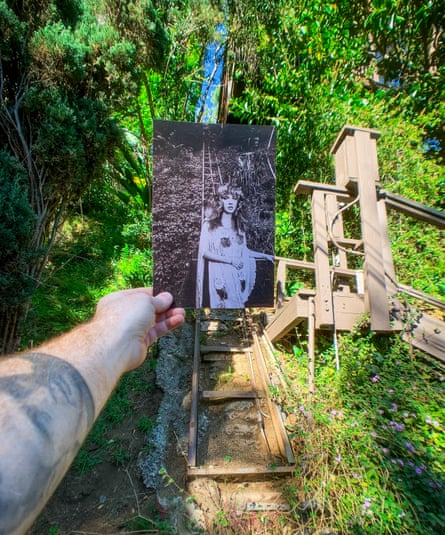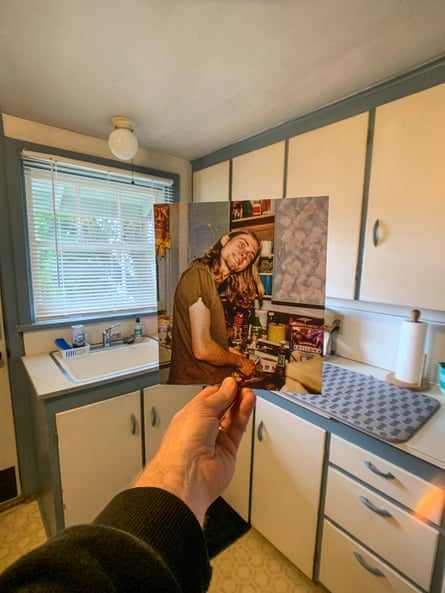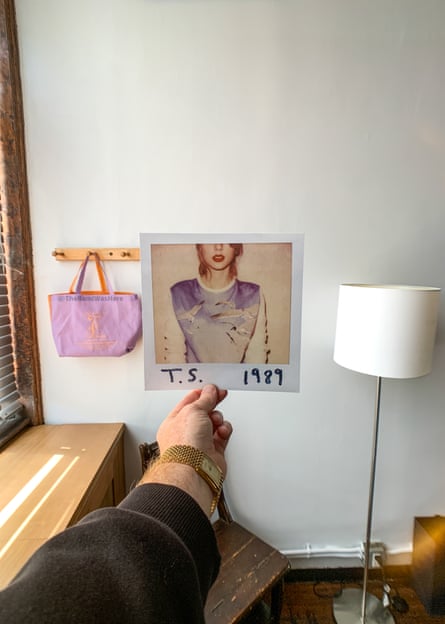“Sometimes it’s just a case of going on Google Maps and losing my mind,” says Steve Birnbaum. “Just searching and searching until I see something recognisable.”
Birnbaum, a film director based in New York, is talking about his hobby: painstakingly tracking down locations of music photoshoots so he can find the exact location to re-photograph himself. Inspired by a project he saw that blended war photography with modern-day locations, in 2010 he started doing the same with family photos, then film and TV locations, before honing in on his musical niche around 2017.
While it’s not an entirely original concept – photographer Alex Bartsch did the same for British reggae album covers – The Band Was Here now has a quarter of a million followers on Instagram. Here, you’ll find Birnbaum revisiting the exact table in a bar that Woody Guthrie sat at back in 1943 or the precise street location in the Bronx where a 14-year-old Tupac was photographed on a moped back in 1985. “When I’m there, and I line it up, and it feels right … it’s a total buzz,” says Birnbaum.
He’s found locations from plenty of big albums. There’s the wall (now a garage) that Michael Jackson stood in front of on Off the Wall; the fire escape behind Prince on the cover of Purple Rain; the stoop Bob Dylan sat on for Highway 61 Revisited. He even got inside the apartment where all the photographs for Taylor Swift’s 1989 album were shot after getting a tip-off that it was for sale and arranging a viewing.

But it’s not just re-photographing iconic imagery, it’s also celebrating lesser known shots that involve finding random buildings, car parks, tattoo parlours or pavements. And Birnbaum is not afraid to get nerdy. He has located the bathtub in the photo printed on the CD of Nirvana’s In Utero from 30 years ago. And not only did he find the hotel that looked out onto the same view that features on Radiohead’s OK Computer cover but he gained access to the room Thom Yorke stayed in to take the same photo.
It’s become a massive undertaking. “I will spend hours on one image where I just can’t find anything,” he says. “So I’ll fall into this hole of trying to track it down.” He’s still fervently searching for album cover locations by Smashing Pumpkins and Violent Femmes, while he eagerly awaits a response from the building owner he tracked down where Wu-Tang Clan’s Enter the Wu-Tang (36 Chambers) was shot.

His research methods are meticulous: books, magazines, old interviews with photographers – although he never approaches them for help; “I like the hunt,” he says – and finding contact sheets from original photoshoots. “A lot of clues are within contact sheets,” he says. “Because there will be photographs that were taken from sessions earlier in the day, so it tells me the path that people walked that day.”
However, sometimes he can put in all that work, find the location but when he gets there it a giant construction site. “New York has become high rises and glass,” he says. “It’s sad knowing the history, and the people that once stood there, when it’s just completely gone.” Although it has given him a heightened appreciation of his surroundings. “It’s crazy how much you walk the streets and go past things,” he says. “Music history is all around us.”
after newsletter promotion

It’s also proven to be a project loaded with unexpected emotion. “It definitely has a different feel when the artists are no longer with us,” he says, citing a photo of John Lennon that he traced as being located just a block from where the Beatle was murdered. He felt similarly upset when he found Kurt Cobain’s abandoned Hollywood home in order to photograph the spot that Cobain and his then baby daughter Frances Bean Cobain sat back in 1992. “That was the most eerie spot I’ve ever been in,” he says. “I went back and forth as to whether to post those because it becomes more personal when it’s family photos. They’re in the public domain but you have to respect that these are people. It’s not the movies.”
But aside from the occasional pang when connecting with the tragic history of his favourite bands, it’s been an stimulating project that has brought to physical life some cherished memories. “Growing up I was living with these images,” he says. “I was opening up magazinesand seeing them all the time. Music photography was a huge inspiration for me and now that I can go and stand in that very location, it’s, like, wow!”


